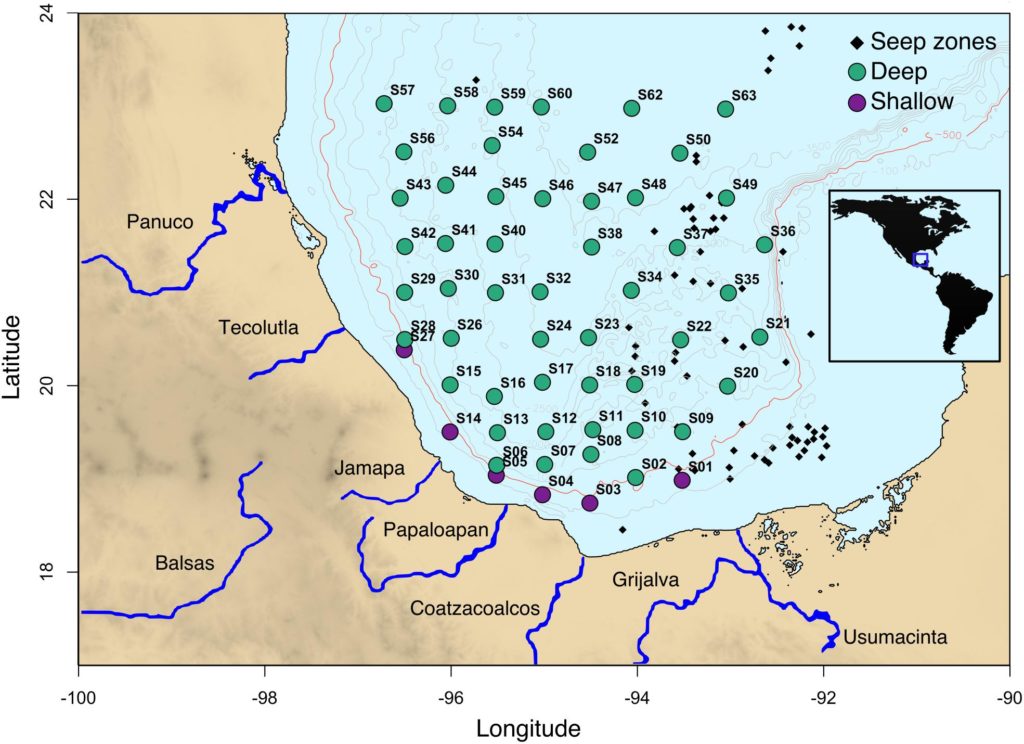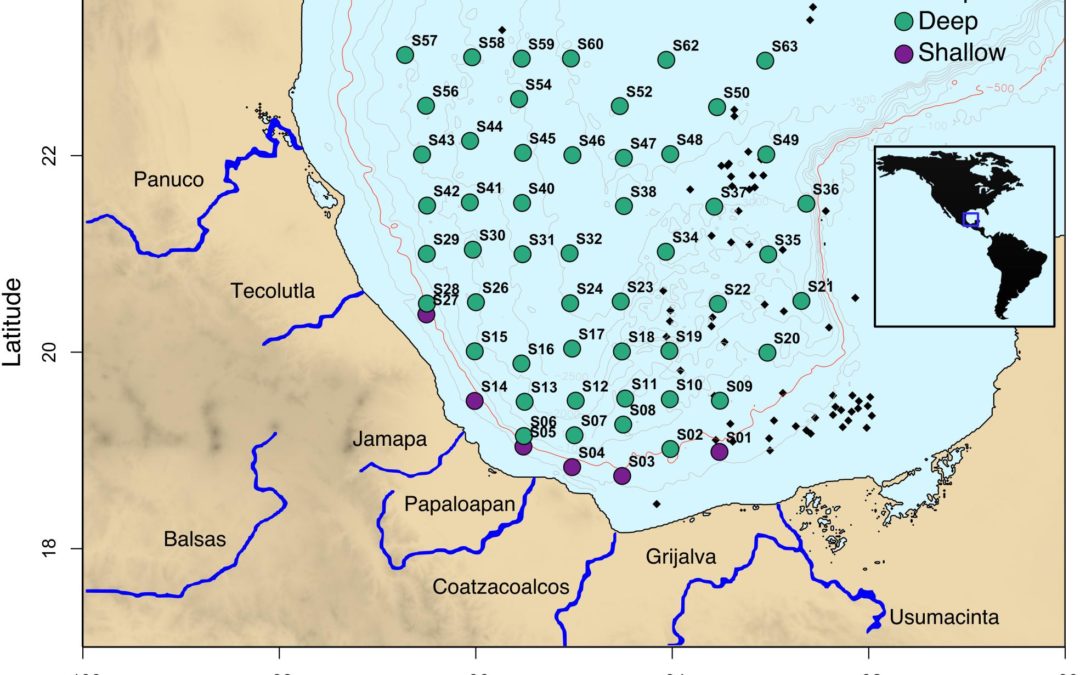
Front. Microbiol., 18 October 2018 | https://doi.org/10.3389/fmicb.2018.02528
E. Ernestina Godoy-Lozano1†, Alejandra Escobar-Zepeda1†, Luciana Raggi1†‡, Enrique Merino1, Rosa Maria Gutierrez-Rios1, Katy Juarez1, Lorenzo Segovia1, Alexei Fedorovish Licea-Navarro2, Adolfo Gracia3, Alejandro Sanchez-Flores1* and Liliana Pardo-Lopez1*
1Instituto de Biotecnología, Universidad Nacional Autónoma de México, Cuernavaca, Mexico
2Departamento de Innovación Biomédica, CICESE, Ensenada, Mexico
3Instituto de Ciencias del Mar y Limnología, Universidad Nacional Autónoma de México, CDMX, Mexico City, Mexico
Marine sediments are an example of one of the most complex microbial habitats. These bacterial communities play an important role in several biogeochemical cycles in the marine ecosystem. In particular, the Gulf of Mexico has a ubiquitous concentration of hydrocarbons in its sediments, representing a very interesting niche to explore. Additionally, the Mexican government has opened its oil industry, offering several exploration and production blocks in shallow and deep water in the southwestern Gulf of Mexico (swGoM), from which there are no public results of conducted studies. Given the higher risk of large-scale oil spills, the design of contingency plans and mitigation activities before oil exploitation is of growing concern. Therefore, a bacterial taxonomic baseline profile is crucial to understanding the impact of any eventual oil spill. Here, we show a genus level taxonomic profile to elucidate the bacterial baseline, pointing out richness and relative abundance, as well as relationships with 79 abiotic parameters, in an area encompassing ∼150,000 km2, including a region where the exploitation of new oil wells has already been authorized. Our results describe for the first time the bacterial landscape of the swGoM, establishing a bacterial baseline “core” of 450 genera for marine sediments in this region. We can also differentiate bacterial populations from shallow and deep zones of the swGoM based on their community structure. Shallow sediments have been chronically exposed to aromatic hydrocarbons, unlike deep zones. Our results reveal that the bacterial community structure is particularly enriched with hydrocarbon-degrading bacteria in the shallow zone, where a greater aromatic hydrocarbon concentration was determined. Differences in the bacterial communities in the swGoM were also observed through a comprehensive comparative analysis relative to various marine sediment sequencing projects, including sampled sites from the Deep Water Horizon oil spill. This study in the swGoM provides clues to the bacterial population adaptation to the ubiquitous presence of hydrocarbons and reveals organisms such as Thioprofundum bacteria with potential applications in ecological surveillance. This resource will allow us to differentiate between natural conditions and alterations generated by oil extraction activities, which, in turn, enables us to assess the environmental impact of such activities.
Research funded by the National Council of Science and Technology of Mexico – Mexican Ministry of Energy – Hydrocarbon Trust, project 201441. This is a contribution of the Gulf of Mexico Research Consortium (CIGoM).
Artículo disponible en: Frontier in Microbiology


Recent Comments